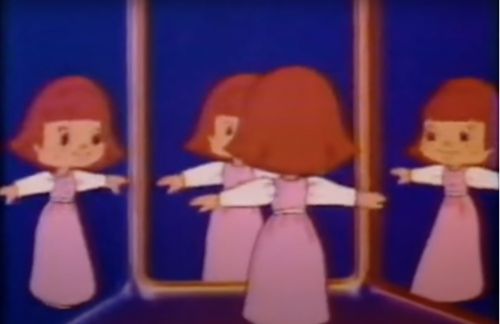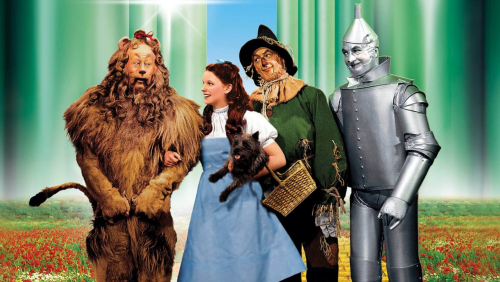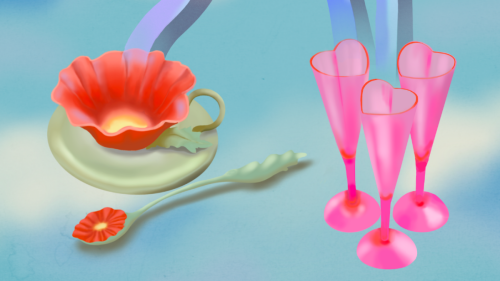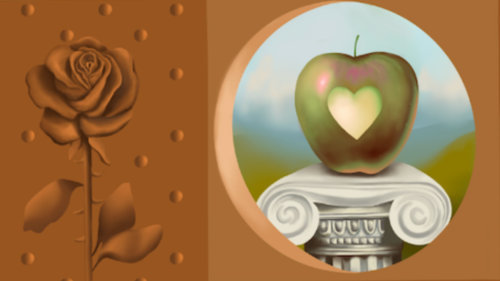Love Maps by Lise Silva Gomes
Opening Reception Friday, February 2nd, 5-10pm
Artist Talk @ 5:30pm
Lise Silva Gomes' artwork weaves tapestries of memory and desire, blurring the lines between reality and fantasy. Based in Oakland, CA, Silva Gomes explores visual archetypes and collective consciousness through fiber art, painting, and written word. Her work, an homage to the language of intuition, beckons viewers into a realm where dreams are the currency of understanding.
Prior to the opening exhibition of Love Maps, Silva Gomes took some time to reflect on the artwork created during her residency at Local Language. In this exclusive interview, we unravel the mysteries behind Silva Gomes' surreal landscapes, exploring the hidden narratives that pulse beneath their surfaces.
Local Language: How would you describe this collection of artwork showcased in the Love Maps exhibition?
Lise Silva Gomes: I would describe these pieces as playful, mystical, and nostalgic. A friend who saw some early drafts of the paintings described the feel as Alice in Wonderland. I wanted to create works that feel as though they are from a dream space, unlocking core memories from childhood. I remember often wondering, ‘who will I be when I grow up?’—a sentiment encapsulated by a song I was obsessed with on a Strawberry Shortcake VHS tape. It’s pretty hilarious today.
I associate childhood with a feeling of wonder and mystery about oneself and the world. Many adults enter a set path and don’t maintain that sense of openness about their future. Those who retain a sense of infinite possibilities sometimes look to divination for guidance (astrology, tarot, I Ching, etc.). With this collection, I aimed to evoke a sense of wonder and introspection about the paths we take in connecting with all forms of love, incorporating both childlike images and divination.
Local Language: How do other influences, such as literature, movies, textiles, or personal experiences impact your work?
Lise Silva Gomes: I tend to use dream logic, theories, concepts, and my interpretations of pop culture as vehicles to express my experiences. This collection was a meditation on the theory of Love Maps – the idea that your early childhood experiences create a map in your mind to finding love. I researched the topic of love for about a year, delving into classic pop psychology books on relationship theories like attachment styles and love languages, exploring ancient divination games and oracle tools, and investigating little girls’ toys of the 80s and 90s. Oracle cards, such as The Joy of Relationships Deck, which are similar to tarot cards but have their own specific symbology, were particularly important sources of inspiration. So aesthetically, I aimed to incorporate the timeless, mystical, mysterious feel of oracle cards with the aesthetic of children’s toys and graphics from the 80s and 90s.
Movies probably have the biggest impact on my work. I’m very influenced by movie set design and cinematography. I usually think of my compositions very cinematically. The era of Technicolor films like The Red Shoes, The Wizard of Oz, and Black Narcissus are visual feasts of saturated color that influence how I use color. I think of movies as a populous art form. Vintage advertising is also a big influence on my work and people forget that ads are usually created by really gifted visual artists who took a commercial career path. I love “low brow” vessels for art, like advertising, because the goal of influencing the masses by tapping into subconscious desires is really fascinating. Both movies and advertisements are probably the modes of art that the average person consumes most.
Local Language: What are some of the art and historical influences that have impacted your style, composition, and content?
Lise Silva Gomes: As far as artistic influences, I am most influenced by surrealist painters like Leonora Carrington, Dali, [René] Magritte, Ithell Colquhoun, Maruja Mallo, filmmakers like Maya Deren and fiber artists like Kaisik Wong.
Local Language: Love Maps contains a plethora of hyper-realistic depictions of objects, plants, animals, and symbols. Can you talk about a few of the objects featured in the artwork, and what they represent?
Lise Silva Gomes: Locket Surprise encapsulates so many layers of the ideas I aim to touch upon – childhood imagery, femme experiences, the psyche and inner dream world, and the dialogue with the outer world...When I was researching children’s toys, I came across 1993’s Locket Surprise Barbie. It's such a surreal toy – beautiful, funny, intriguing, disturbing, heartfelt, and gruesome. The doll’s chest, painted to look like she is wearing a sweetheart bodice to match her skirt, is shaped like a heart with her two large plastic breasts at the top, narrowing to her tiny Barbie waist. With a gentle pull, her chest cavity opens and inside the heart shaped cover is a mirror, reflecting a heart shaped portrait of Ken inside her body. The poignancy of Ken infinitely reflected back to himself inside her body is multilayered commentary on messages girls are given about their sense of self, and the importance of romance in their identities and purpose. But there’s also something beautiful about the heart as an open space and this secret mirror reflection happening inside the closed heart. I designed a heart shaped box similarly with breasts on the outer lid, but inside is a painting reflecting dreams, doubts, and desires reflecting back at its mirror.
Face/Vase functions as both a single-stem floral vase and a puzzle. It draws inspiration from the classic Rubin Vase ambiguous illusion, where the viewer may perceive just the vase, the two faces, or all three elements. In my rendition, there are three large elements—the two profile heads and the vase. However, the heads evoke phrenology, with the 'brain' section cut into puzzle shapes. The piece pays homage to Acorsi puzzles, crafted by William Acorsi, a folk artist known for his boldly colored wooden puzzle sculptures in the1970s and 80s that possess both adult sophistication and childlike charm.
Local Language: Are there recurring symbols or themes prevalent in your overall body of work? If so, what do they represent to you?
Lise Silva Gomes: I frequently incorporate hourglasses/clocks, the moon, vessels, roses, and eggs into my work. Time is such an enigma; some eras of your life fly quickly and others feel more anchored, drawn out and slow. Time also reflects various mental states, ranging from the anxiety of being rushed or pressured to the tranquility of meditation or boredom. Depending on the aspect of time I wish to evoke, I utilize different types of timepieces. Moons (maybe ironically) ground my compositions…They give a sense of depth and a feeling that you are in a world, whether that is earth or somewhere else. Vessels evoke femininity, motherhood, and antiquity, metaphorically holding space. Roses imply a passionate desire, a beautifully vivid symbol of a dream your heart burns to hold. Eggs symbolize perfect potential, the mystery of unboxing something, waiting for something to emerge.
Details of Vessel Map by Lise Silva Gome
Details of Mystery of Love by Lise Silva Gomes
Local Language: Your artwork captures complex emotions linked to love and memory. What draws you to these themes?
Lise Silva Gomes: As we move into increasingly heavy times, it feels light and healing to luxuriate in the concept of love. The pandemic placed a magnifying mirror on our personal relationships, domestic life, dreams, and needs. Many of us reevaluated our relationships to work, family, friendship, ourselves and romance. Investigating what love looks like for us as individuals can help us to connect with the dreams we seek.
It also feels like a challenge as a woman artist to make commentary on love. I recently re-read bell hook’s All About Love, which I hadn't read in about 20 years. In the introduction she talks about how it is practically taboo for ‘serious’ women academics or artists to explore the concept of love because it is seen as embarrassingly low brow or cliche for a woman to be concerned with love. Only the observations of love made by male artists and thinkers of great stature like Shakespeare are taken seriously. 20 years ago when I first read All About Love, I soon abandoned the book and dismissed it as a frivolous topic. In this era of my life, I was pursuing an academic career and wanting to examine “serious” issues. I now see how turning away from that topic was self-protective; as a 20 something year old woman in that time period, I would have been completely dismissed for showing any interest in examining the topic of love.
Today, I see the great lack of conversation about love in our culture as a societal problem. I see how love has power to reshape our individual and communal actions for the highest good and it's something desperately needed as people become increasingly more isolated, lonely, and alienated as technology and modernity increases.
Local Language: Your use of vibrant colors serves as a powerful tool to depict memory, which is sometimes thought of as a fading, far away feeling. Can you explain why you choose to portray memory through objects such as a maze or puzzle?
Lise Silva Gomes: Although memory can certainly be a maze or a puzzle, I feel that those elements more so convey ‘the game of love” and evoke the mystery of life. Childhood toys often have maze-like components, things nestled within larger things, role playing, symbols, and lead toward a mission to collect elements or uncover a pattern. In a way, toys are like gamified little microcosms of life, ways for children to practice the game of life.
Local Language: The connection between the altar in Apple Spell and the dimensional Ouija Board and Planchette is particularly compelling—both of these objects depict spaces for communing with the deceased, honoring their spirits, bringing them into the present, and potentially facilitating communication. What does it mean to paint these types of spaces?
Lise Silva Gomes: That is a good observation. The element of mystery in our lives—the unknown—is very compelling, and divination is a human attempt to reach out to the mystery for guidance. We hold a partial puzzle on our life’s path and are looking to collect the missing pieces along the way. Sacred spaces and oracle tools are ways to connect us with ancestors and spirits beyond this world that may have a bird’s eye view that we don’t have of our lives.
Details of Apple Spell by Lise Silva Gomes
Details of Love Maze by Lise Silva Gomes
Local Language: If you were to create an art installation in a public space that interacts with people, how would your work engage the audience?
Lise Silva Gomes: I think a lot about Wendy’s Fast Food Sunrooms (Solariums) and McDonald’s Play Places…. They were two ubiquitous corporate spaces that kind of functioned as public spaces and they are both almost completely nonexistent today. If I could make a dream public installation it would be something for play or quiet contemplation, like those spaces. Essentially, I would love to create an ambiance where people would just want to pass time. I think a truly successful ambiance transports you to another world or mindstate, enticing you to return and spend more time there to reconnect with that mental space.
Local Language: Imagine your art as a soundtrack. What genre of music would it be, and can you describe the mood it would create?
Lise Silva Gomes: I envision something ambient and sweet with a bold aesthetic statement, yet really unclear lyrics like the Cocteau Twins. I love music that can evoke a magical ambiance and holds a lot of mystery. There’s something almost spiritually profound about being moved by a melody, even when you have no idea what the lyrics mean…It allows you to imagine what the song is about and reveals more about you in what you interpret or project onto the lyrics.









